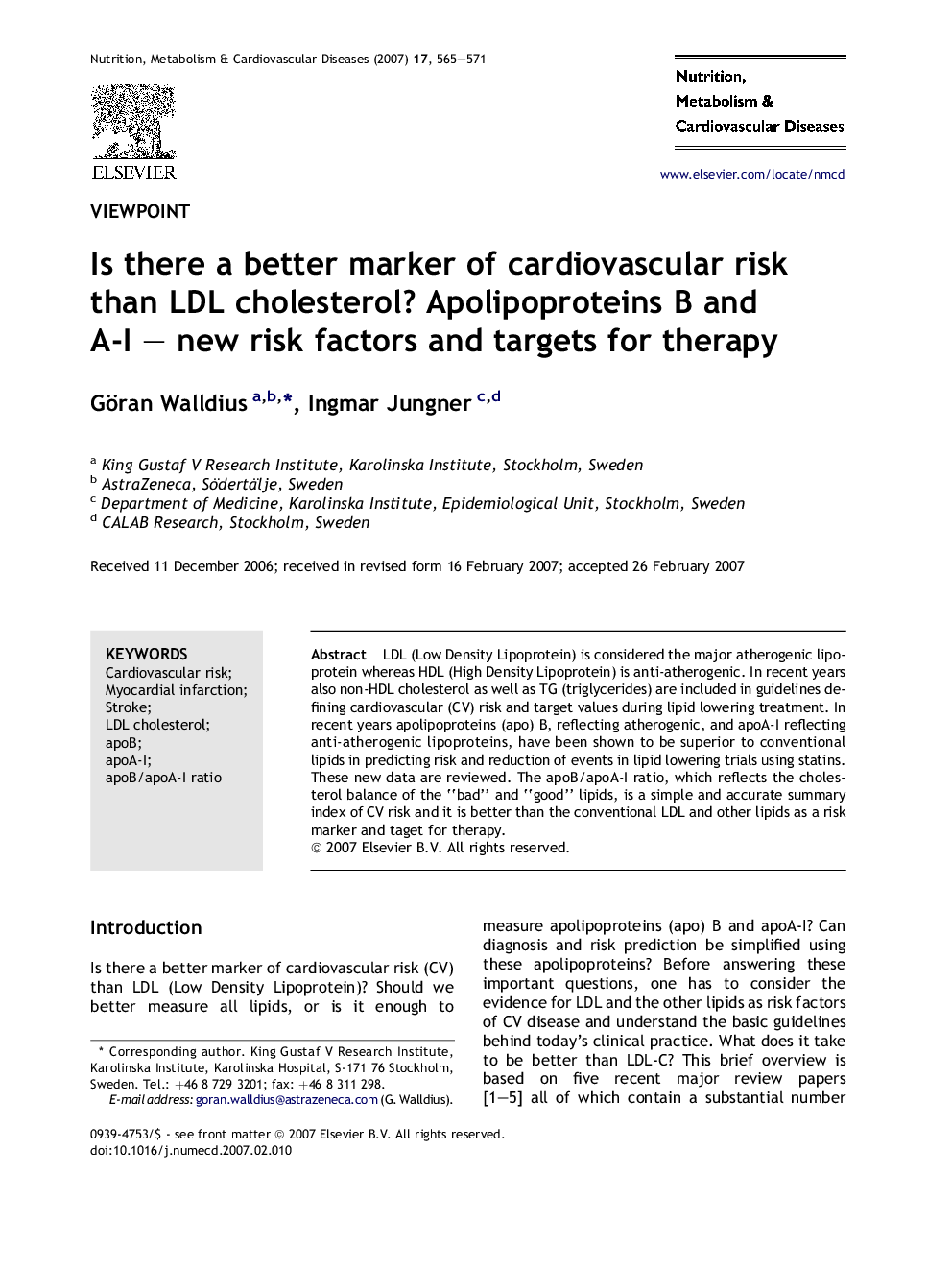| Article ID | Journal | Published Year | Pages | File Type |
|---|---|---|---|---|
| 3002589 | Nutrition, Metabolism and Cardiovascular Diseases | 2007 | 7 Pages |
LDL (Low Density Lipoprotein) is considered the major atherogenic lipoprotein whereas HDL (High Density Lipoprotein) is anti-atherogenic. In recent years also non-HDL cholesterol as well as TG (triglycerides) are included in guidelines defining cardiovascular (CV) risk and target values during lipid lowering treatment. In recent years apolipoproteins (apo) B, reflecting atherogenic, and apoA-I reflecting anti-atherogenic lipoproteins, have been shown to be superior to conventional lipids in predicting risk and reduction of events in lipid lowering trials using statins. These new data are reviewed. The apoB/apoA-I ratio, which reflects the cholesterol balance of the “bad” and “good” lipids, is a simple and accurate summary index of CV risk and it is better than the conventional LDL and other lipids as a risk marker and taget for therapy.
